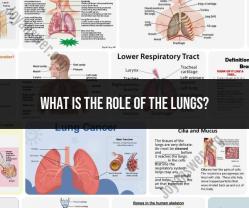What are the antagonistic muscles?
Antagonistic muscles are a pair of muscles that work in opposition to each other to produce movement around a joint. When one muscle contracts (becomes shorter and tighter), it is the "agonist" or "prime mover," responsible for producing a specific movement. The antagonist, on the other hand, relaxes and lengthens to allow that movement to occur smoothly.
The primary functions of antagonistic muscles are:
Controlled Movement: By working in pairs, antagonistic muscles help control the movement of a joint. When one muscle contracts, it pulls on the bone, moving it in one direction. The antagonist muscle prevents the movement from becoming too rapid or uncontrolled by opposing the contraction of the agonist.
Protection of Joints: Antagonistic muscles help stabilize and protect the joints by controlling the range of motion. They prevent hyperextension or hyperflexion of the joint, reducing the risk of injury.
Smooth and Precise Movements: The interplay between agonist and antagonist muscles ensures that movements are smooth, precise, and under conscious control. This is important for tasks that require fine motor skills.
Examples of antagonistic muscle pairs in the human body include:
Biceps and Triceps: In the arm, the biceps (agonist) contract to bend the elbow, while the triceps (antagonist) relax and allow the movement. When extending the elbow, the roles reverse, with the triceps contracting and the biceps relaxing.
Quadriceps and Hamstrings: In the leg, the quadriceps (agonist) contract to straighten the knee, while the hamstrings (antagonist) relax. When bending the knee, the hamstrings contract, and the quadriceps relax.
Flexor and Extensor Muscles in the Hand: These muscles control the flexion (bending) and extension (straightening) of the fingers and wrist.
Pectoralis Major and Latissimus Dorsi: In the chest, pectoralis major is the agonist when the arm moves forward, while the latissimus dorsi acts as the antagonist by relaxing. When the arm moves backward, the roles reverse.
Gastrocnemius and Tibialis Anterior: In the calf, the gastrocnemius (agonist) points the toes downward (plantar flexion), while the tibialis anterior (antagonist) allows the toes to point upward (dorsiflexion).
Understanding the role of antagonistic muscles is essential for biomechanics, physical therapy, sports training, and overall movement control. These pairs of muscles work together to allow us to perform a wide range of movements while maintaining joint stability and control.
Demystifying Antagonistic Muscles in the Human Body
Antagonistic muscles are pairs of muscles that work in opposition to each other to produce movement. When one muscle in a pair contracts, the other muscle relaxes. This allows for controlled and precise movements.
Identifying Antagonist Muscles and Their Functions
Some common examples of antagonistic muscle pairs include:
- Biceps and triceps (arm flexion and extension)
- Quadriceps and hamstrings (leg extension and flexion)
- Gastrocnemius and tibialis anterior (ankle plantarflexion and dorsiflexion)
- Rectus abdominis and erector spinae (trunk flexion and extension)
- Pectoralis major and latissimus dorsi (shoulder adduction and abduction)
Antagonist Muscle Groups in Various Parts of the Body
Antagonistic muscle groups can be found throughout the body. Here are a few examples:
- Upper arm: Biceps and triceps
- Forearm: Flexor carpi radialis and extensor carpi radialis longus
- Thigh: Quadriceps and hamstrings
- Calf: Gastrocnemius and tibialis anterior
- Abdomen: Rectus abdominis and erector spinae
- Chest: Pectoralis major and latissimus dorsi
- Back: Trapezius and rhomboids
- Neck: Sternocleidomastoid and splenius capitis
The Importance of Maintaining a Balance in Muscles
It is important to maintain a balance in antagonistic muscle groups. If one muscle group is stronger than its antagonist, it can lead to muscle imbalances and injuries. For example, if the quadriceps are stronger than the hamstrings, it can lead to a condition called anterior knee pain.
Practical Applications of Understanding Antagonistic Muscles
Understanding antagonistic muscles can be helpful in a number of ways, including:
- Exercise: When designing a workout routine, it is important to include exercises that target both the agonist and antagonist muscle groups. This will help to prevent muscle imbalances and injuries.
- Sports: Understanding antagonistic muscles can help athletes to improve their performance and reduce their risk of injury. For example, a baseball player can improve their throwing velocity by strengthening their rotator cuff muscles, which are antagonists to the deltoids.
- Injury prevention: By maintaining a balance in antagonistic muscle groups, you can help to prevent injuries. For example, strong hamstrings can help to protect the knees from injury.
Conclusion
Antagonistic muscles are an important part of the human body. By understanding antagonistic muscles, you can improve your exercise routine, sports performance, and injury prevention.





